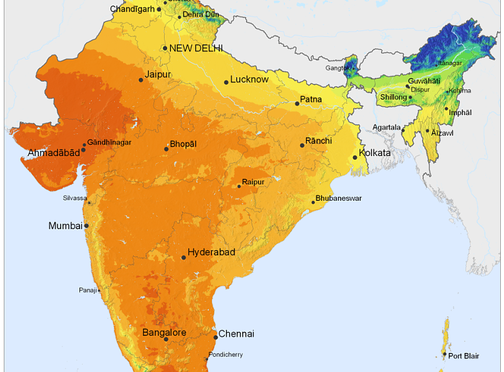A joint report on “How should India drive its solar transformation? Beehives or Elephants” was released today by Bridge To India, a leading consulting services and knowledge provider in the Indian cleantech market, and Tata Power Solar, India’s largest integrated solar player.
The report compares four distinct scenarios of solar power generation – residential rooftops (solar bees), large rooftops (solar pigeons), utility scale projects (solar horses) and ultra-mega projects (solar elephants). Each scenario is analysed in terms of not only levelized cost of energy (LCOE) but also landed cost of power (LCOP) which measures the cost to a consumer at the point of consumption, rather than at the point of generation. The LCOP, in certain scenarios could be as much as 30% higher than LCOE, and should become the de-facto economic metric for India to examine various power options.
Commenting on the report, Ajay Goel, CEO, Tata Power Solar, said, “Solar is unique in its limitless potential for power generation – from distributed to centralized generation, and residential KW to GW scale solar plants, the permutations are endless. To solarize our economy, it is important to find the right mix of pathways that will have both economic as well as social impact. We hope that this unique and thought-provoking report will trigger a robust dialogue on the subject.”
The objective of the report is to evaluate each of the four distinct scenarios in terms of speed of deployment, implementation challenges and potential for job creation.
Highlighting the key findings of the report, Dr. Tobias Engelmeier, Founder & Director, Bridge To India, said, “The realizable potential for solar power generation in India is between 110 GW to 145 GW across different types of systems. The four scenarios together could easily create over 675,000 solar jobs in India in the next 10 years. But, the real issue is to choose the best way for India to go solar which entails a fair choice between millions of small systems (“bees”) on one end of a spectrum and a few very large systems (“elephants”) on the other, the former creating a consumer market and the latter an infrastructure market.”
The report shows that currently the ultra-mega plants with a levelized generation cost of INR 6.6/kWh and a landed cost of INR 8.4/kWh are most attractive and are already at parity with imported coal. With an expected rise in imported coal prices, all the other three scenarios will also be able to achieve parity with imported coal over the next three years. In the long term, large rooftop systems will be the cheapest option for Indian with a levelized generation cost of INR 6.6/kWh and a landed cost of INR 6.7/kWh by 2024.
The report also leads us to the fact that while the levelized generation cost of large ultra-mega plants seems attractive, policy makers and investors should evaluate the landed cost of power, given the much higher related infrastructure requirements and the technical and commercial losses in the grid.
The findings of the report also indicate that Rooftop projects can lead to significantly higher job creation than large projects. The small rooftop scenario would contribute the most, with around 325,000 new jobs for 25 GW.
India has the potential to become one of the largest transformative solar markets in the world, free of subsidies and with a thriving solar value creation ecosystem. However, it must strike a balance among the various ramp-up opportunities it has – both via central and distributed generation. Thus, the report recommends specific actions in each of these areas.


